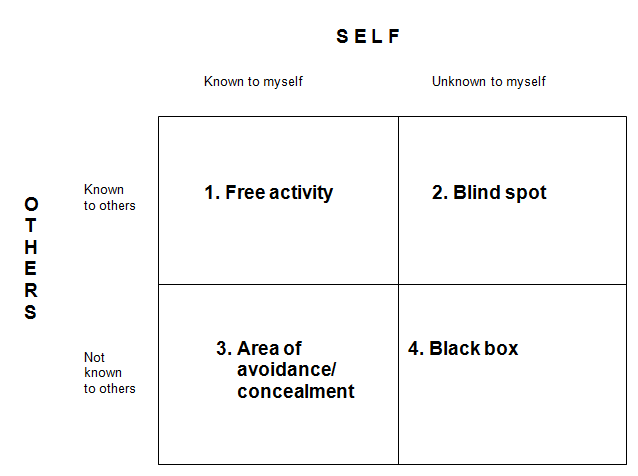
The four windows can be described as follows:
Window 1:
The area of free activity or the so-called "open self" is the part of the personality (e.g. motivations, behaviour etc.) which is known to both myself and others (colleagues, friends, staff members etc.). This part is usually very small in new groups. The more the group gets to know one another, the larger this field becomes. The other fields then shrink accordingly.
Window 2:
The so-called "blind spot" is the part of our personalities of which we ourselves are unaware or unconscious, but which is known to others. It is my effect on others. From other people’s point of view, for example, you perhaps speak unclearly or fail to maintain eye contact. You yourself are yet to notice this deficit. This can equally apply for positive effects which are perceived by people around you but not by you yourself.
Window 3:
The area of avoidance/concealment is the part of my personality which I know but which others are not yet aware of (either because I haven’t made it known to others or because I don’t want to). In important meetings, for example, you would not openly admit to gaps in knowledge, inhibitions when speaking or insufficient preparation.
Window 4:
The area of unknown activity is the part of actions and motives which neither I nor others are aware or conscious of. Despite this, they exist and have an influence. Suppressed bad experiences, for example, can determine our actions for a long time.